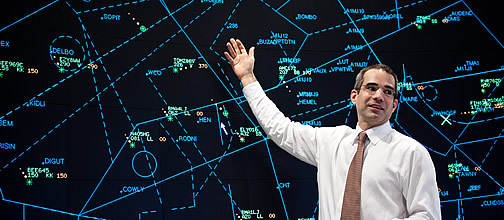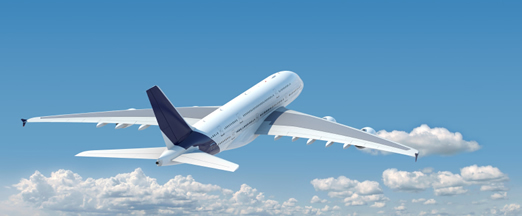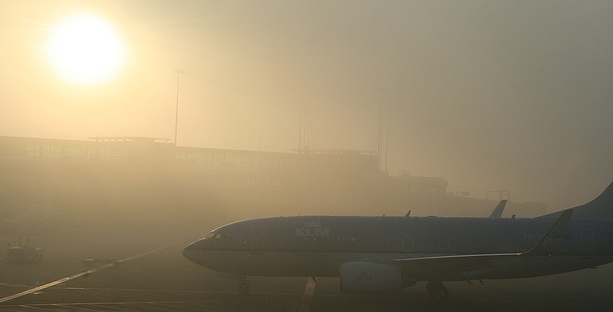Why airspace infringements are everyone’s problem
23 January 2014In its simplest terms, an infringement occurs when an aircraft makes an unauthorised entry into controlled airspace.
This has the potential to affect other members of the flying public through the likelihood of commercial aircraft being re-routed or delayed.
Pilots must aim to ensure that an infringement isn’t assumed to be ‘minor’ or that they will eventually determine their position. The Distress and Diversion Cell can be reached on 121.5 and should be contacted as soon as a pilot believes they may have a problem. The cell actively encourages pilots to call them in order to stop the infringement from developing any of the effects mentioned below.

Pilots must aim to ensure that an infringement isn’t assumed to be ‘minor’ or that they will eventually determine their position.
A few minutes of infringement can result in wide spread knock-on effects, beginning with traffic disruption. The controller must assume that the infringing pilot is lost and unpredictable, so a five- mile radius buffer around the infringer is established. This can begin a chain reaction as the buffer may encroach on an airport’s ILS (instrument landing system) or climbout, therefore inhibiting arrivals and departures.
A quick glance at the radar replays available through FlyOnTrack (flyontrack.co.uk) will give you an idea of how an infringement works and just how serious they are by illustrating the disruption that they cause. The radar playback below is taken from FlyOnTrack.co.uk and shows a ‘G.A. Infringer’ entering into Heathrow Class ‘A’ Airspace. More radar playback examples are available on the site.
While aircraft cannot land, they’ll be burning fuel and releasing carbon in a holding pattern, or sitting on the runway or gate missing their pre-planned slots. According to the CAA, an infringement by just one pilot can mean delays for up to 30 airliners and 5000 passengers and result in £50,000 worth of fuel being wasted.
Aside from financial costs and the disruption to commercial aircraft, infringements also pose a very real and significant threat to safety as a potential collision risk.
So what causes people to infringe?
At NATS we’ve now collected over 400 questionnaires from infringing pilots. Some of the most common reasons include complacency, pilot workload and distractions, the misreading of charts, poor or incorrect pre-flight briefing and misidentification of land features.
But for every reason for infringing, comes a reason why it can be avoided. If you have a transponder, then simply switching it on can make a difference. Mode Charlie (ALT) means that if you do wander where you shouldn’t, the controllers will at least have an indication of your altitude, allowing controllers to deal with the situation more effectively for you and the surrounding traffic.
Software, such as SkyDemon and Aware from Airbox, has been developed in conjunction with NATS to make pre-flight planning more effective. It also includes valuable elements that can warn you if you are about to enter controlled airspace, helping to eliminate accidental infringements.

Operations like those performed by the Distress and Diversion cell can be observed on ‘Visit ATC’ days, which are organised at locations across the country by the Airspace and Safety Initiative (ASI) of which NATS are a part. The opportunity to view live air traffic control operations in this way, aims to develop the mutual understanding between pilots and controllers.
Controllers are able to tell pilots where they are within seconds, but pilots must feel that they are able to ask for that help too. Through the initiatives mentioned here, amongst others, NATS is working to actively develop the positive relationship between the General Aviation Community and controllers in order to create a more effective, well informed and safer flying environment for everyone.
Comments
Please respect our commenting policy and guidelines when posting on this website.




23.01.2014
12:31
Jonathan Smith
Further details to follow about a series of Pilot/Controller Forums to be held around the South-East of England this spring. Also more opportunities for GA pilots to visit NATS Swanwick.
Jonathan Smith
NATS General Aviation Lead
29.01.2014
15:33
James Chan
I am a private pilot with no instrument rating.
Most private pilots do not have instrument ratings due to the cost and time it takes to obtain one.
I firstly find it absurd at the amount of Class A airspace NATS manages which excludes non-instrument rated pilots. The total volume in the UK FIR seems to be greater than anywhere else in the world.
Secondly non-instrument rated pilots are trained to meet navigation tolerances that are less than an instument-rated pilots.
Thirdly, non-instrument pilots constantly face very tight navigational demands – and sometimes less than 2 nm gaps to successfully avoid your airspace.
Forthly, most of your airspace is RNP 5 / BRNAV so allow for +/- 5nm accuracy. But it’s available for use by instrument rated pilots only.
Therefore the instrument rated pilot can make greater navigational errors by operating within your airspace, compared to the non-instrument rating pilot who is forced to remain outside!
Could you consider re-classifying your airspace so that non-instrument rated pilots can operate safely within it, rather than failing so miserably to operate outside it?
I don’t think UK pilot training is much worse than anywhere else in the world. But if NATS is suffering more infringements than any other ANSP in the world, I wonder whether UK airspace has been configured incorrectly and perhaps made too demanding that you can very easily be caught out if you’re not careful enough.
30.01.2014
21:12
Jonathan Smith, NATS General Aviation Lead
James. The airspace in the South East of England is indeed some of the busiest and most complex in Europe. Despite this fact, we safely and routinely incorporate general aviation flights flown with visual reference in all of our Control Zones around the major airports. The Terminal Manoeuvring Area airspace which overlays the Control Zones and Control Areas is where all of the departure and arrival routes serving the London airports interact. In order that our controllers can safely manage all of the interactions in this highly complex environment, the Terminal airspace is classified to require a certain level of aircraft equipment to enable flight in all weather conditions. Additionally, pilots operating in this airspace are required to be qualified to fly solely using the aircraft instruments. We simply couldn’t guarantee to safely incorporate aircraft operating by visual reference in this most complex airspace and that is why the airspace classification precludes visual flight.
The Required Navigational Performance (RNP) value assigned to a volume of airspace relates to the capability of the aircraft’s navigational equipment as opposed to an indication of a pilot’s ability to operate to a particular navigation tolerance.
07.03.2014
07:59
Pete
Having watched all the infringement clips available, I find them very informative please place more…
I fly and based within a TMA, and our club fly on a LOA, and think you do an excellent job.
please post more infringements on you tube for all to learn from